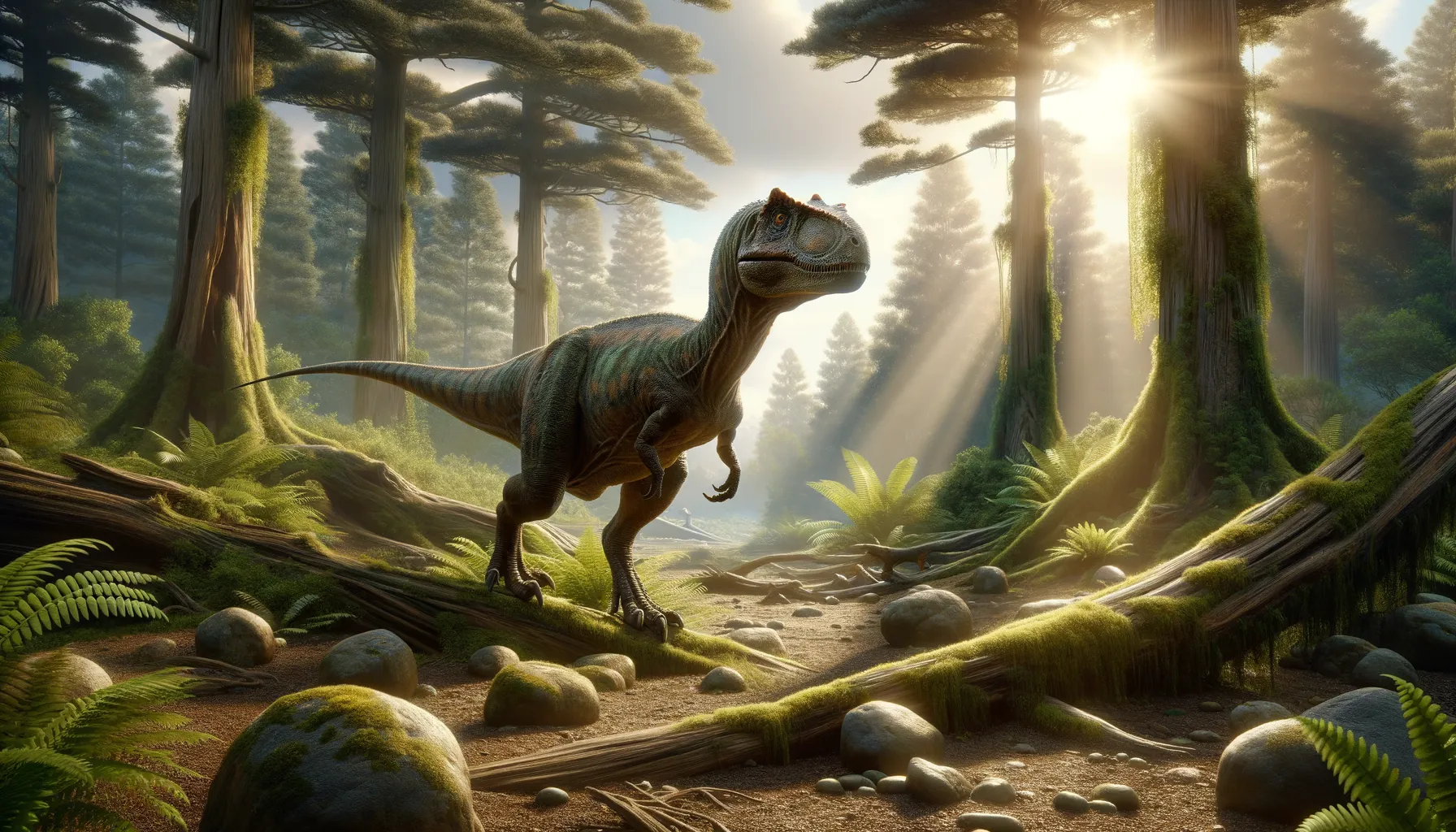
Hexinlusaurus
Jurassic's agile forest dweller.
Period
Jurassic
Length
Approximately 2 meters long.
Height
Estimated around 1 meter tall.
Weight
Roughly 20 kilograms.
Hexinlusaurus was a small, bipedal herbivore dinosaur that roamed during the Jurassic period. Known for its agility and moderate speed, it adapted well to life in prehistoric forested areas. The dinosaur’s fossils have been critical in understanding the early development and evolution of herbivorous dinosaurs. Its remains were unearthed in China and offer insights into its behavior and environmental adaptations. Although not among the largest, its significance in paleontology is noteworthy.
Diet
Hexinlusaurus was herbivorous, primarily feeding on available flora, such as ferns and other low-lying vegetation. Its diet likely consisted of plant materials that were plentiful in the Jurassic forests.
Hunting
Being a herbivore, Hexinlusaurus did not hunt but foraged for plants. Its small stature and speed allowed it to quickly navigate through dense vegetation to find food and escape predators.
Environmental challenges
Hexinlusaurus faced challenges such as the need to find ample vegetation to support its diet. Predation was also a significant concern, requiring it to rely on its agility and size for protection. Seasonal changes might have affected food availability, adding to the struggle for survival. Its evolution included adaptations like keen eyesight for spotting predators and efficient digestive systems for extracting nutrients from tough plant matter.
Speed
Likely a moderate runner due to its small size.
Lifespan
Approximately 10 to 20 years.
First discovery
First discovered in the Sichuan Province of China in 1983.
Fun Facts
- Hexinlusaurus was a small dinosaur that lived during the Middle Jurassic period, about 170 million years ago.
- It was named after Hexin, the Chinese scientist who first discovered its fossils in Sichuan Province, China.
- Hexinlusaurus was a herbivore, meaning it primarily ate plants.
- The dinosaur was relatively small, approximately 1.8 meters or about 6 feet in length.
- Hexinlusaurus had a long neck, which helped it reach plants and leaves easily.
- It was part of a group of dinosaurs known as ornithischians, which are characterized by their bird-like hips.
- Despite its small size, Hexinlusaurus played an important role in its ecosystem by helping to keep plant growth in check.
Growth and Development
Hexinlusaurus experienced a growth trajectory typical of small herbivorous dinosaurs, likely reaching maturity quickly to avoid predation. Its development featured distinct phases, including rapid growth spurts in its early years. These growth patterns helped it achieve the agility necessary for survival. The species showcased evolutionary traits aimed at efficient reproduction and survival in its competitive environment.
Habitat
Hexinlusaurus inhabited lush, temperate Jurassic forests, which provided abundant plant life. These environments offered cover from larger predators and access to diverse plant sources. Rivers and streams possibly ran through these landscapes, offering hydration and additional flora. Its habitat likely included regions with seasonal changes affecting plant availability.
Interaction with other species
In its habitat, Hexinlusaurus likely coexisted with other herbivores, competing for similar food sources. It also shared spaces with predatory dinosaurs, necessitating alertness and evasive maneuvers. The presence of various species created a dynamic ecosystem where Hexinlusaurus had to adapt and interact for survival. Its interactions may have included both competition and avoidance strategies.
Natural lifespan
Hexinlusaurus likely lived around 10 to 20 years naturally.
Reproduction
Reproductive behaviors likely included laying eggs, as with most dinosaurs of its type. Nesting sites would have been carefully chosen for protection against predators and environmental elements. The young were probably precocial, needing to be relatively independent shortly after hatching.
Social behaviour
Hexinlusaurus might have exhibited some social behavior, such as foraging in small groups for increased vigilance against predators. Group living could have offered safety, though size limitations required cautious resource management. Evidence on specific social structures is limited, suggesting a possible range in social dynamics from solitary to loosely social.
Fossil locations
Fossils of Hexinlusaurus have predominantly been found in the Sichuan Province of China. These fossils provide valuable insights into the dinosaur's anatomy and lifestyle. The location of its fossils indicates that it thrived in diverse, prehistoric ecological conditions unique to that region.
